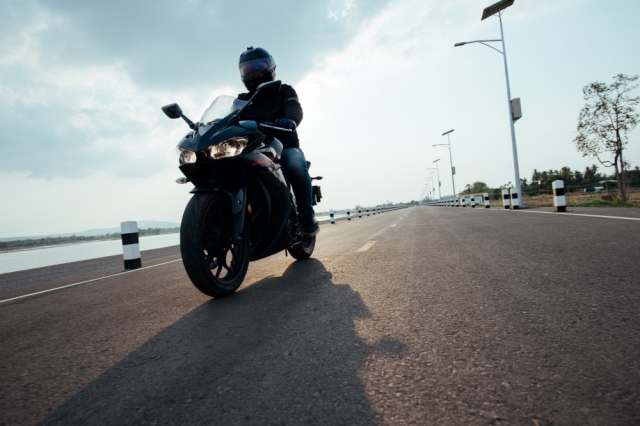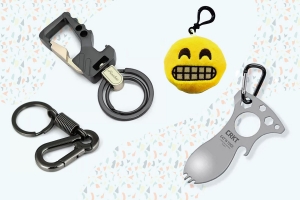Lane-splitting, the practice of riding a motorcycle between lanes of slow-moving or stopped traffic, is a topic of much debate among motorists. While it can save riders time and help reduce traffic congestion, it carries certain risks. For motorcycle riders, mastering the correct technique for lane-splitting is essential to maintaining safety on the road. Improper execution can lead to accidents, making it crucial for riders to approach lane-splitting with caution and awareness.
Understanding when and how to correctly perform lane-splitting can significantly reduce this practice's risks. By recognizing appropriate situations for lane-splitting and following key safety tips, motorcyclists can better protect themselves and others on the road, ensuring a safer riding experience for everyone.
Understanding Lane-Splitting Laws
The first step to safe lane-splitting is understanding the laws that regulate it. In some states, such as California, lane-splitting is legal under specific guidelines, while in others, it remains illegal. Riders must familiarize themselves with the local regulations before attempting to split lanes. Ignorance of the law could lead to legal penalties or being held liable in the event of an accident.
Even in states where lane-splitting is legal, there are usually restrictions on how it should be done. Knowing the correct speeds and conditions under which lane-splitting is allowed can prevent misunderstandings and ensure a smoother experience for all road users.
When to Lane-Split: Ideal Traffic Conditions
Lane-splitting should only be done in certain traffic conditions to maximize safety. The ideal scenario is when traffic is slow-moving or completely stopped. In these conditions, lane-splitting can help reduce the risk of rear-end collisions, a common danger for motorcyclists in heavy traffic.
It is crucial to avoid lane-splitting when traffic is moving at higher speeds. Doing so in fast-moving traffic significantly increases the chance of an accident. Always assess the speed and flow of traffic before deciding to lane-split, and ensure that other vehicles are traveling at a safe and predictable pace.
Maintaining an Appropriate Speed
One of the key factors in safe lane-splitting is maintaining an appropriate speed differential. The difference between the speed of your motorcycle and the surrounding traffic should be small. A good rule of thumb is to stay within 10-15 miles per hour faster than traffic flow. This allows you to react quickly to any sudden changes or hazards.
Exceeding this speed differential can lead to unsafe conditions, as you may not have enough time to avoid a vehicle that changes lanes or stops suddenly. Riding at a controlled and reasonable speed helps ensure that you can navigate through traffic safely and responsibly.
Positioning and Visibility While Lane-Splitting
Correct positioning is crucial when lane-splitting. Riders should aim to stay in the center of the lane, keeping as much distance as possible between their motorcycle and other vehicles. This ensures you remain visible to drivers and gives you more room to maneuver in case of sudden lane changes or obstacles.
Additionally, it's important to make your presence known by wearing brightly colored gear or using your bike's horn or lights when necessary. Improving your visibility reduces the risk of other drivers not noticing you and suddenly swerving into your path.
Avoiding Blind Spots and Sudden Lane Changes
One of the biggest dangers of lane-splitting is entering a vehicle's blind spot. When cars move, particularly in slow traffic, drivers may not always check their mirrors before changing lanes. This makes it vital for motorcyclists to anticipate sudden lane changes and avoid staying in a car's blind spot for too long.
It's also important to watch for indicators or movements that suggest a car is about to change lanes. Giving yourself enough space and staying alert to driver behavior can prevent accidents and keep your ride smooth and safe.
Using Proper Protective Gear
Wearing the proper protective gear is crucial for safety while lane-splitting. Given the proximity to other vehicles and the tight spaces involved, the risk of injury increases in the event of an accident. Here's why it's important to equip yourself correctly:
- Helmet: Protects your head from severe injuries during a crash.
- Armored Jacket: Adds an extra layer of protection for your torso in case of impact.
- Gloves: Safeguard your hands from abrasions and improve grip on the handlebars.
- Boots: Offer ankle protection and help prevent foot injuries in a collision.
- Reflective or High-Visibility Clothing: Makes you more noticeable to drivers, reducing the chance of being cut off unexpectedly.
Communicating with Other Drivers
While lane-splitting, clear communication with other drivers is key. This can be done through hand signals, horn taps, or even a quick flash of your lights. Such communication helps ensure that drivers are aware of your presence and intention to pass between lanes.
Being proactive in communicating with drivers reduces confusion and increases the likelihood that they will give you enough space to pass safely. In congested traffic, where stress levels are higher, maintaining a calm and clear presence on the road benefits everyone.
Knowing When Not to Lane-Split
Finally, it's essential to know when not to lane-split. If traffic is moving too quickly, insufficient space between vehicles, or weather conditions reduce visibility, it is safer to stay within your lane. Lane-splitting in the wrong conditions can put you and other drivers at risk. If an accident occurs, you may need a motorcycle accident attorney to help you deal with the legal complexities and ensure your rights are protected.
Use your judgment to assess the situation before committing to lane-splitting. When in doubt, err on the side of caution and wait for a safer opportunity to proceed. Your safety is always the top priority, and making smart decisions on the road helps prevent unnecessary accidents.
Practicing Lane-Splitting in Controlled Environments
Before venturing into real traffic situations, it's beneficial to practice lane-splitting in controlled environments. This can be done in empty parking lots or during motorcycle safety courses that simulate traffic conditions. Practicing in low-risk environments allows you to build confidence, improve your judgment, and refine your ability to maneuver through tight spaces without the added pressure of real-world traffic.
When riding between vehicles, you'll become more familiar with your motorcycle's handling, balance, and control. This preparation ensures you're ready to handle lane-splitting challenges in live traffic. With proper training and practice, you can greatly reduce the risks associated with this technique and increase your overall safety on the road.






